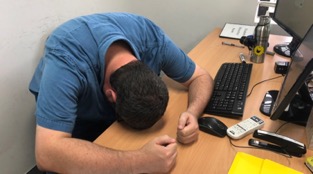Organizations are not walking – they are running to reduce their Oracle technology footprints. Referring to an August 2018 CNBC’s report that Amazon is looking to stop using Oracle’s technology by early 2020, Ellison said in a CNBC article that Amazon wasn’t able to get off Oracle years ago. Other competitors, like SAP and Salesforce, have also tried and failed to end their Oracle reliance, Ellison said.

“They’ve got a goal to get off by 2020,” he said at a company event. “SAP couldn’t do it. Salesforce couldn’t do it. I don’t think they can do it. Anyway, we’ll find out.” Mr Ellison continues in a December 2018 article stating “In terms of technology, there is no way that… any normal person would move from an Oracle database to an Amazon database.” This ‘stickiness’ of the Oracle database – with this tone to customers as a whole – has created a wave of migrations and retirements of their database at clients.
But we have heard from clients their intend to reduce (or remove) their Oracle footprint. Why? Let us count the ways::
- CLOUD: Oracle is not a cloud company and the world is moving to cloud solutions.
- SOLUTIONS: The acquired solutions in Oracle – Peoplesoft, JD Edwards, Siebel, etc – are not evolving or cloud centric.
- SOFTWARE AUDITS: The Oracle software audits are more frequent, more painful and causing business disruptions. This issue is so prolific, Gartner recently published an article titled “How to Minimize the Risk or Oracle Audits and Reduce Cost Exposure“.
- MONEY: The yearly maintenance check to Oracle is bringing less and less value.
- QUALITY: The quality of the sales, support and service from Oracle has been consistently going down.
- FLEXIBILITY: Businesses are striving for greater flexibility from their technology, people and vendors and Oracle does not make that possible.

“Why after 20 years are Oracle databases still so painful to administer? Every other piece of tech is easier to keep running properly but the database still requires an audience of technicians to optimize”, stated an organization’s technical expert. “I am done paying for Larry’s island! (referring to Larry Ellison’s purchase of an entire Hawaiian island in 2012) “

This brings to light the desire to execute a combination of strategizes:
- ARCHIVE: If you have applications that need to keep running, how to actively archive older data out of the system to reduce the overall footprint.
- MIGRATE: Move the workload to a new solution. But this requires understanding the specifics of your old Oracle system and how to best map the data to the destination.
- RETIRE: Data retention laws and business priorities keep a lot of old Oracle systems running today. What if you could retire the application and data – in proper context, still searchable while retaining corporate data retention rules? You moved to Workday, so why is that old Peoplesoft still running? JD Edwards? Siebel? Custom app written in the 90s?
Organizations need to start with that first success-in-retirement and Platform 3 Solutions is here to help be that end-to-end solution and services firm to get you there. That includes helping you research and assess what systems will bring the greatest ROI and execute a plan to properly retire the technology so you can ‘flip the switch’ on old Oracle systems.
You can see how we complete a retirement of an Oracle-based Peoplesoft system here: https://platform3solutions.com/case-study-how-you-can-retire-peoplesoft-easily-and-risk-free/
Learn more from www.platform3solutions.com.
Platform 3 Solutions is a global leader in end-to-end legacy application migration and retirement solutions. Platform 3 empowers secure and seamless transitions of data and applications, eliminates technology debt, and delivers the ROI to invest in technology modernization.



